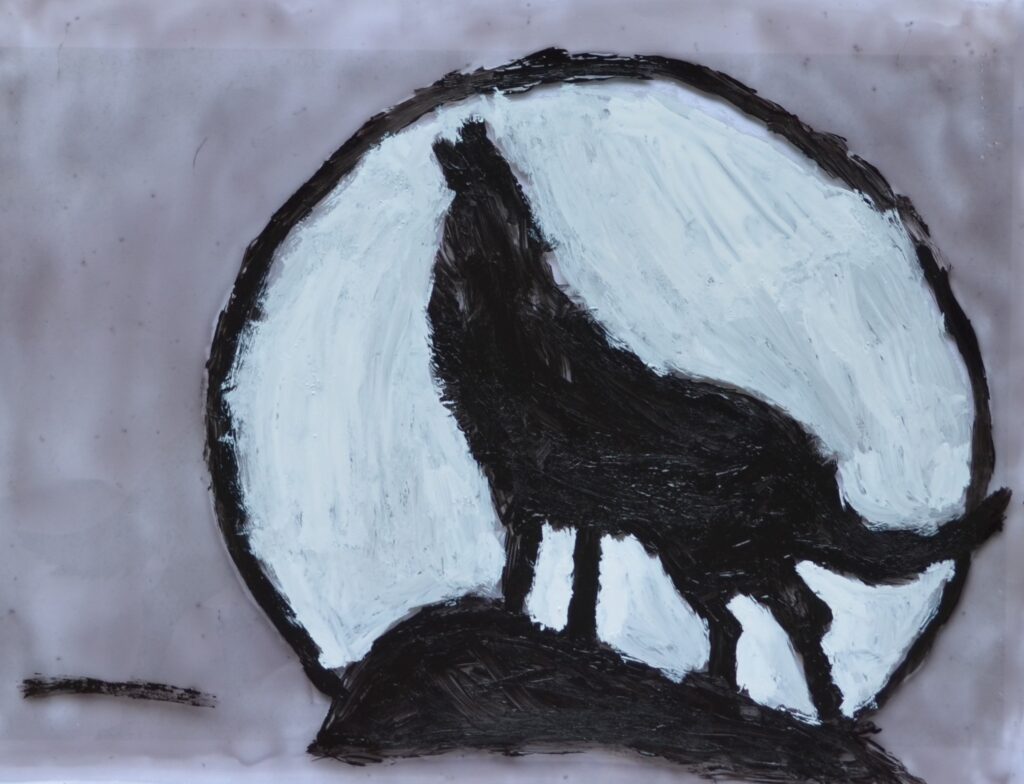
This striking glass painting captures a timeless moment: a lone wolf standing atop a jagged hill, its silhouette howling against the glowing full moon. The composition is stark and bold, using only black and white to evoke a raw, untamed wilderness. At first glance, it is simple, but beneath that simplicity lies deep emotion and ancient symbolism.
A lone Wolf in Focus
The central figure—a black silhouette of the wolf—is rendered with strong, rough brushstrokes. The artist has deliberately avoided fine details, instead emphasizing the shape and posture of the animal. Its head is tilted back, mouth open in mid-howl, capturing a moment of connection between creature and sky. The stance suggests strength, defiance, and a fierce independence that has long made the wolf a symbol of the wild.
The Moon as a Luminous Backdrop
Behind the wolf, a large white moon dominates the scene, painted as a bright circle with rough, uneven edges. It frames the wolf like a spotlight, drawing the eye immediately to the animal’s form. The contrast between the stark white moon and the dark silhouette of the wolf creates dramatic tension, heightening the sense of mystery and power in the piece.
Technique and Style
This painting uses bold, confident strokes and a monochromatic palette to achieve its impact. The textured brushwork adds a visceral energy, suggesting wind, wilderness, and the unpredictable forces of nature. Unlike polished or highly detailed glass paintings, this piece embraces roughness, letting each mark and smudge contribute to the mood of wild, untamed night.
Symbolism and Emotion
The image of a wolf howling at the moon has long carried deep symbolism across cultures. It evokes themes of solitude, resilience, transformation, and primal instinct. In this painting, those themes are heightened by the stark black-and-white contrast, which hints at the eternal struggle between darkness and light, the known and the unknown. The wolf’s cry becomes both a call of longing and a declaration of strength.
A Study in Contrast
Beyond the wolf and the moon, the rest of the painting fades into muted greys, creating a background that feels empty, cold, and vast. This emptiness amplifies the sense of isolation, making the wolf’s howl seem to echo across endless night. The painting becomes not just a depiction of an animal, but a meditation on loneliness, freedom, and the wild spaces of the soul.
Conclusion: A Moment Frozen in Time
This glass painting of a lone wolf is more than just a piece of art. It is a doorway into the wilderness, a moment of primal poetry captured in black and white. It invites viewers to pause, listen, and feel the ancient cry of the wolf, reminding us of the wildness that still exists in the world and within ourselves. Through bold strokes and dramatic contrast, the artist has created a piece that is haunting, beautiful, and deeply human.
